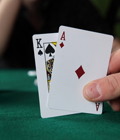文化遗产彩票巨额基金注入大英博物馆(2)
建筑占地面积看起来不大,其实它的纵深很广,深入地下三层。“现在还在不停地挖。”博物馆的工程主管Tony Wilson说道。他还补充说,现在正是秋高气爽、冬日和煦的好时节。“当你在土层中开掘的时候,湿滑的泥土会大大拖延施工进程。”
开掘期间,除了一些家畜的骨骼和伦敦内战时期遗留的壕沟(有趣的是,这些沟渠以自身的存在向人们展示了350年前伦敦的狭小)开凿痕迹之外,没有更多的重大发现。
这栋建筑将为一些文物护理人员——例如现在正在自己的工作室中,将18块赫尔墨斯雕像碎片中的最后一块粘合起来的文物复原者Kathyrn Oliver等人——提供更好的工作条件。
在20世纪70年代,大英博物馆的石匠只是简单地把赫尔墨斯雕像用胶水粘合起来。而今日,文物保护者要做的工作更为科学和艰苦。
经历了自2009年以来长达一千个小时的复原工作,裘园的赫尔墨斯还少了几根手指和脚趾,哦,很抱歉,他的丁丁也缺损了;但这丝毫不影响其优美的造型,它将被选送至今年夏天举办的伦敦奥运会上,作为侍立于奥林匹克小径旁的陈列之一。
用于建设中心的筹款仍在继续。Burnett说他有理由而不是狂妄地认定:剩余的英镑25 000 000资金将很快到位,投入到中心的建成中——这一资金的到位将标志着占总投资额近20%的款项的落实——到2014年正式开放时,首次大展会是维京人展。
“它是布鲁姆斯伯里最大的吞金黑洞。”Burnett承认说。虽然博物馆常用于纪念大型项目——例如2000年大中庭的重新开放和无数其它或大或小的变革——“但如果这是第一次为藏品维护而举办的重大纪念活动,”他说道,“那将是具有划时代意义的。”
译文:
Building the British Museum's world conservation and exhibitions centre. Photograph: Graham Turner for the GuardianIt is still an enormous muddy hole from which around 50 lorries aday are taking away excavated London clay, but it is a hole the BritishMuseum is quite proud of. In this hole, it believes, is the key to thesurvival of the collection.
The museum was told on Friday that it could have 10m of lottery cash to help complete ambitious plans for a 135m world conservation and exhibitions centre on the Bloomsbury site's north-west corner.
Itwas, said the museum's deputy director, Andrew Burnett, "a huge publicendorsement of the project" and an important step closer to the finishline.
The cash confirmed by the Heritage Lottery Fund means the museum is still 17m short of the overall cost. The more than100m it already has includes 22.5m from the last government, 40mfrom the museum's own resources and 35m from philanthropicfundraisinge.
The 17,000 sq metre extension, designed by Richard Rogers's architectural practice, will have four purposes.
Itwill provide a dedicated space of more than 1,000 sq metres for thetemporary exhibitions the museum is renowned for – past highlightsinclude China's Terracotta Army in 2008 and Moctezuma in 2009 – to replace the converted reading room space that is used at present.
Therewill also be state-of-the-art science and conservation laboratories toreplace the laboratories housed in the basements of 19th-centuryhouses – an arrangement fraught with problems. The lift down to oneEgyptology lab, for example, is only big enough for mummified animalsand children, not the full-size ones.
Burnett said the buildingwould have a transformative effect on conservation and scientificresearch. "There should be no limit to the brilliant things that theconservators are able to do," he said.
The building will provide6,500 sq metres of storage space finally making room, for example, forthe museum's unique ethnography collection currently stored off site inHackney.
One advantage will be logistical. The provision of oneof the largest lifts in the UK, into which articulated lorries candrive, should mean museum bosses never again have to watch with theirhearts in their mouths as priceless and irreplaceable artefacts arebrought in.
"We want to show the collection worldwide and this allows us to do that," said Burnett.
Thebuilding site itself does not look very big, as the museum is going sofar down, creating three basement levels. "It's dig, dig, dig at themoment," said the museum's project director, Tony Wilson, who added thatthe mild winter and dry autumn had been a considerable help. "Whenyou're excavating this amount of material, when it's wet it slows theprocess down enormously."The work has unearthed nothing moresignificant than cattle bones and traces of London's defensive ditch dugduring the civil war – which is interesting in its own right as itshows just how small London was 350 years ago.
The buildingwill provide better conditions for people such as conservator KathyrnOliver, who, in a temporary studio, is putting the final touches to amagnificent statue of Hermes, which came to her in 18 pieces.
Inthe 1970s, British Museum stonemasons attempted to glue him together.
Today's conservators' task is much more scientific and laborious.
Afterabout a thousand hours of work since 2009, Hermes – who belongs to Kew –is still short of a few fingers and toes and, alas for him, his penis,but he looks in remarkably good shape, ready to go on display as part ofa planned Olympic trail this summer.
The fundraising for thecentre continues. Burnett said he was confident, though not complacent,that the remaining 英镑25m would be raised ready to open the centre – whichwill amount to about 20% of the museum's footprint – by 2014, with thefirst major show on Vikings.
"It is the biggest hole inBloomsbury," he conceded. While the museum is used to big projects – theGreat Court reopening in 2000 for example and innumerable otherchanges, big and small - "this if the first major project for the careof the collection", Burnett said. "It is incredibly important."
相关推荐
随机专题



 您现在的位置:
您现在的位置: 
 现金玩德州扑克要点分析
现金玩德州扑克要点分析 百家乐怎么玩才不会输
百家乐怎么玩才不会输 赌场常见轮盘下注技巧赌法
赌场常见轮盘下注技巧赌法 在线牛牛棋牌游戏的胆略和智慧介绍
在线牛牛棋牌游戏的胆略和智慧介绍


